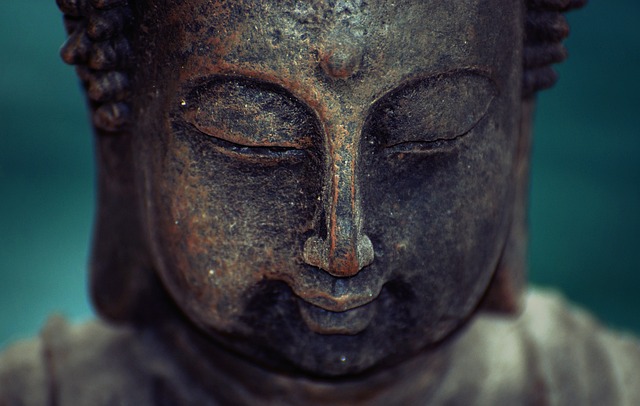For centuries, meditation has been a cornerstone of traditional healing practices around the world. From the ancient yogic traditions of India to the contemplative practices of Buddhist monks, meditation has been used to promote physical, mental, and spiritual well-being. In recent years, modern medicine has begun to recognize the benefits of meditation, with numerous studies showing its effectiveness in reducing stress, anxiety, and depression. However, for many cultures, meditation is not just a tool for relaxation or stress relief, but an integral part of their healing traditions. In this article, we will explore the role of meditation in traditional healing practices and how it can be used to promote holistic health and wellness.

1. The Ancient Roots of Meditation in Traditional Healing Practices
Meditation is a practice that has been around for thousands of years and has been used in traditional healing practices across the world. In ancient times, meditation was used as a way to connect with the divine and to achieve a state of inner peace and harmony. It was believed that through meditation, one could tap into the healing power of the universe and bring balance to the body, mind, and spirit.
In many traditional healing practices, meditation was often combined with other techniques such as herbal medicine, acupuncture, and massage therapy. The goal was to create a holistic approach to healing that addressed not just the physical symptoms of illness, but also the emotional and spiritual aspects of a person’s well-being. Today, many people still turn to meditation as a way to manage stress, improve mental clarity, and promote overall health and wellness. Whether practiced alone or as part of a larger healing regimen, meditation remains a powerful tool for achieving inner peace and balance.
- Meditation has been used for thousands of years in traditional healing practices.
- It was believed that through meditation, one could tap into the healing power of the universe and bring balance to the body, mind, and spirit.
- Meditation was often combined with other techniques such as herbal medicine, acupuncture, and massage therapy.
- The goal was to create a holistic approach to healing that addressed not just the physical symptoms of illness, but also the emotional and spiritual aspects of a person’s well-being.
- Today, many people still turn to meditation as a way to manage stress, improve mental clarity, and promote overall health and wellness.
2. How Meditation Can Complement Conventional Medicine in Healing
Meditation is a practice that has been used for centuries to promote relaxation and reduce stress. However, recent studies have shown that meditation can also complement conventional medicine in healing. Here are some ways in which meditation can be used as a complementary therapy:
- Reducing stress: Stress is a major contributor to many health problems, including heart disease, high blood pressure, and depression. Meditation has been shown to reduce stress levels, which can help to improve overall health.
- Pain management: Meditation can be used as a tool to manage chronic pain. By focusing on the present moment and breathing deeply, individuals can learn to manage their pain and reduce the need for pain medication.
- Improving sleep: Meditation can also be used to improve sleep quality. By practicing meditation before bed, individuals can calm their minds and promote relaxation, which can lead to better sleep.
Overall, meditation can be a powerful tool in promoting healing and improving overall health. By incorporating meditation into a conventional treatment plan, individuals can experience a more holistic approach to healing.
3. The Science Behind Meditation’s Healing Powers: Exploring the Mind-Body Connection
Meditation has been practiced for thousands of years and has been shown to have numerous health benefits. One of the most fascinating aspects of meditation is its ability to heal the mind and body. Here are some of the ways that meditation can help:
- Reduces stress: Meditation has been shown to reduce the levels of stress hormones in the body, such as cortisol and adrenaline. This can lead to a decrease in anxiety and depression.
- Boosts the immune system: Meditation has been shown to increase the activity of natural killer cells, which are responsible for fighting off viruses and cancer cells.
- Improves brain function: Meditation has been shown to increase the thickness of the prefrontal cortex, which is responsible for decision-making and self-control. It also increases the activity in the default mode network, which is associated with self-reflection and empathy.
These are just a few of the ways that meditation can help heal the mind and body. By practicing meditation regularly, you can experience these benefits and more. Whether you are looking to reduce stress, improve your immune system, or enhance your brain function, meditation is a powerful tool that can help you achieve your goals.
In conclusion, meditation has been a vital component of traditional healing practices for centuries. Its ability to promote relaxation, reduce stress, and enhance overall well-being has made it a popular tool for those seeking to improve their physical, emotional, and spiritual health. While modern medicine has made great strides in treating illness and disease, it is important not to overlook the benefits of traditional healing practices, including meditation. By incorporating meditation into our daily lives, we can tap into the power of our own minds and bodies to promote healing and achieve a greater sense of balance and harmony. Whether you are dealing with a specific health issue or simply seeking to improve your overall quality of life, meditation is a powerful tool that can help you achieve your goals. So why not give it a try and see what it can do for you?
